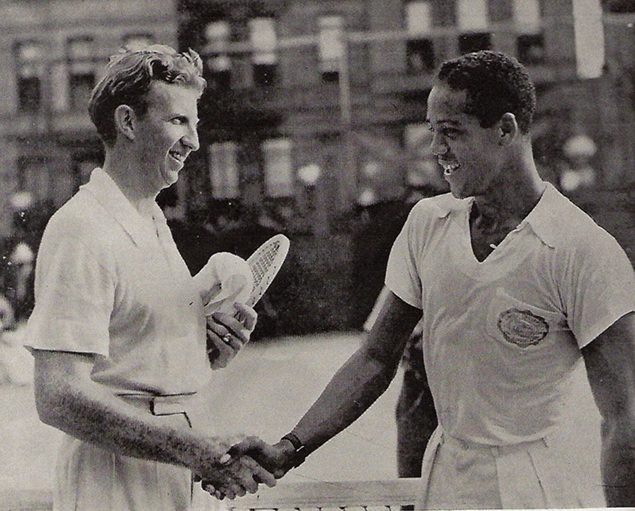
Don Budge (left) and Jimmie McDaniel played a barrier-breaking tennis match in 1940.
Seven years before Jackie Robinson crossed the color line in Major League Baseball, Jimmie McDaniel slipped past U.S. tennis’ racial barriers, albeit, only for a day. The 1940 McDaniel vs. Don Budge encounter loomed as a potential barrier-breaking moment in tennis history. Appropriately, it was played with a David vs. Goliath theme.
McDaniel, 24, the never-had-a-lesson Black underdog, faced Budge, 25, the GOAT (Greatest of All Time) of that era and the first winner of the game’s most coveted achievement – the Grand Slam (having swept the Australian, French, Wimbledon, and Australian titles in 1938). This time, Goliath prevailed. Budge defeated McDaniel 6-1, 6-2 in an exhibition played at Harlem, New York’s Cosmopolitan Tennis Club with more than 2,000 mostly Black fans in the bleachers and hundreds more watching from fire escapes and windows in surrounding homes and buildings. In media reports filed that day, the lopsided score took a back seat to the racial significance of the moment.
“The ‘color line’ was erased, at least temporarily, for the first time in the history of major American tennis,” wrote Ed Hughes in the Brooklyn Daily Eagle.
The Amsterdam News, then one of the nation’s most influential Black newspapers, described the match as “the most important sports and social event to hit Harlem in many years.”
The New York Herald Tribune’s Hall of Fame sportswriter Al Laney wrote, “Donald Budge, the greatest tennis player of the day, performed an important service yesterday for the good of the game that has made him a celebrity and a moderately wealthy man.”
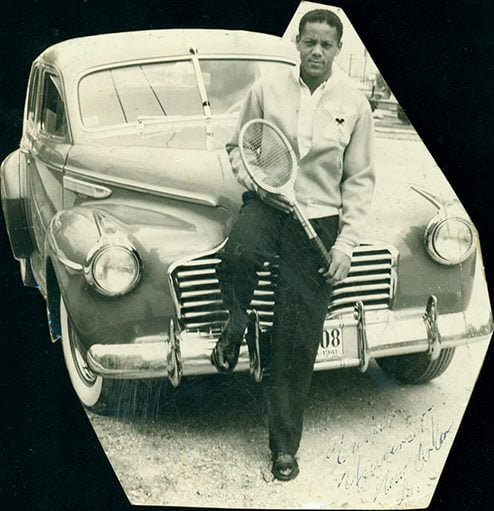
Jimmy McDaniel. Photo courtesy of the International Tennis Hall of Fame.
The Wilson Sporting Goods Company, Budge’s sponsor, pushed for the historic match, which was arranged by the New York Tennis Association, a United States Lawn Tennis Association (USLTA, now USTA) affiliate, and the Cosmopolitan Tennis Club, the American Tennis Association’s (ATA) headquarters. In its 1941 national program, the ATA praised Budge and Wilson’s involvement. “They felt that such a match would stimulate interest and foster a closer relationship between players of both races,” the ATA noted. “We take this opportunity to publicly thank them for this distinct contribution to the game.”
McDaniel, a 6-foot-5 lefty, and 1939 ATA National champion, took the court on wobbly legs and nerves, served more than a dozen double faults and smacked too many groundstrokes long or wide. “I never expected to beat him, but I did want to make a good showing,” said McDaniel, a Xavier University student. “I certainly can say I wish I had his backhand.”
Budge was generous in his appraisal of McDaniel’s effort, emphasizing his potential, not his performance.
“Jimmie is a very good player,” Budge said. “I’d say he ranked with the first 10 of our players. And with some more practices against players like me, maybe he could someday beat all of them.” McDaniel and Xavier doubles partner Richard Cohen later played Budge and Reginald Weir, the 1937 ATA National Champion, in a doubles exhibition.
An all-round athlete, McDaniel played several sports during his early teen years living in Los Angeles. He dabbled in tennis briefly in secondary school, hitting balls against a backboard or on the school’s dirt court. At Manual Arts High School, he focused on track and field, but switched to tennis his senior year, integrating the school’s all-white tennis team. He became the team’s No. 1 player and led it to the league championship.
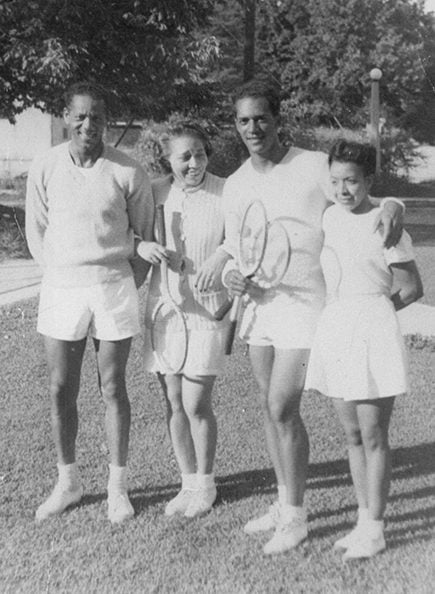
Jimmie McDaniel (left) and Des Margetson (right center). Photo courtesy of the International Tennis Hall of Fame.
In 1935, he reportedly lost a tough practice match against Bobby Riggs, then the nation’s top-ranked junior player. McDaniel’s son, Kenneth, told the New York Times that he believed his father might have been chiseled out of the match. “My father was too quiet and too polite to argue,” Kenneth said. Riggs won three major events: Wimbledon (1939) and U.S. Nationals (1939, 1941), but lost to Hall of Fame legend Billie Jean King in the 1973 ‘Battle of the Sexes’ match in the Houston Astrodome.
ATA officials and players have often cited four-time men’s National Champions McDaniel, Weir, Tally Holmes and Ora Washington, an 8-time women’s national champion, as Black players that might have become top-ranked USLTA players had they been given the opportunity to compete in USLTA events. Dr. Robert ‘Whirlwind’ Johnson, a vice-president and director of the ATA’s junior development team, seethed when ATA juniors were barred from white tournaments because of bias, not ability.
“What made me maddest was this idea that colored athletes were only good as sprinters or strong boys (who) couldn’t learn … finesse,” Johnson told the Washington Post in 1969. “And somewhere I read an article that said, flat out, that there would never be a great Negro tennis player.”
“People should know that Althea Gibson and Arthur Ashe didn’t just pop out of the sky,” Art Carrington, a longtime ATA historian told the New York Times. “Before them, there was Jimmie McDaniel.”

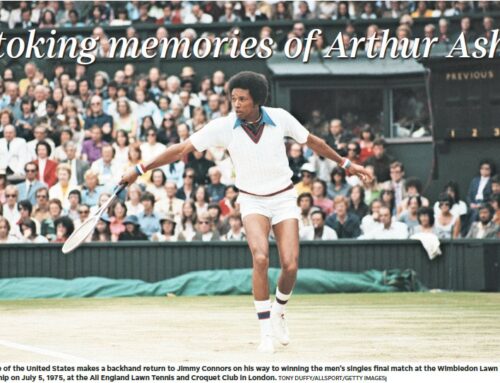
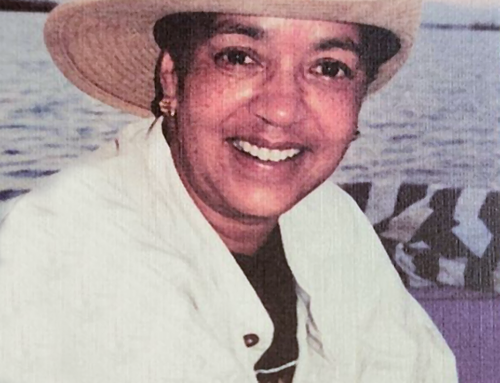


Leave A Comment